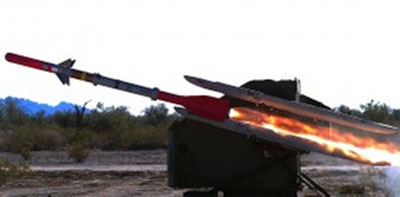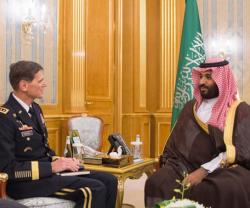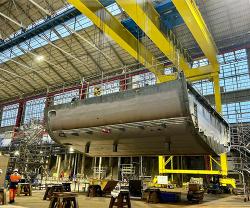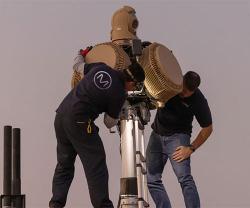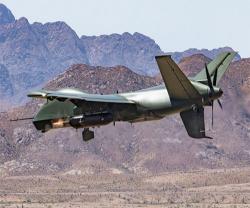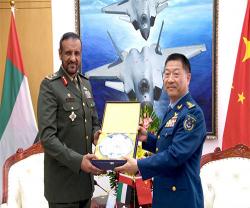Raytheon Intercepts Low Quadrant Elevation Rocket
21.08.2013 North America
Raytheon successfully intercepted and destroyed a low quadrant elevation (QE) 107mm rocket as part of the second series of guided test vehicle (GTV) flight tests of the Accelerated Improved Intercept Initiative (AI3) program. The intercept is a major test milestone before the U.S. Army live-fire engagements begin in September.
“Beginning only 18 months and one week ago, and with firm cost requirements, the AI3 interceptor project successfully engaged and destroyed an in-flight rocket on a challenging, high-speed flight profile greatly enhancing the range of existing capabilities,” said Michael Van Rassen, the U.S. Army's Project Director for Counter Rockets, Artillery and Mortars (C-RAM) and AI3.
“The project used a system of systems approach that lowered risk and enabled an accelerated schedule by leveraging existing government components and off the shelf subsystems to expand the footprint of the protected area for our warfighters,” he added.
The AI3 Battle Element system includes: a Raytheon Ku Radio Frequency System (KRFS) Fire Control Radar, an Avenger-based AI3 launcher, a C-RAM command and control, Technical Fire Control, and the Raytheon AI3 interceptor missile.
After launch, the AI3 interceptor initially guided on in-flight radio frequency (RF) data link updates from the Ku RF Sensor radar, which was tracking an inbound rocket target threat. The interceptor then transitioned to terminal guidance using the interceptor's onboard seeker and the illumination from the radar to guide the missile to within lethal range. The target was then detected using an active RF proximity fuze that determined the optimal detonation time for the warhead. With these measurements, the missile calculated the appropriate warhead burst time and defeated the incoming threat.
“This is a significant technical and performance milestone for the program and our team that met the Army's tight schedule and costs objectives. This second GTV demonstrated full integration of the AI3 Battle Element with the C-RAM command and control architecture against the threat target,” said Steve Bennett, Raytheon Missile Systems AI3 Program Director.
Beginning in September, the US Army will conduct for-the-record testing of AI3 and continue to engage and destroy baseline and enhanced capability targets such as 107mm and other rockets, unmanned air systems (UAS) and other threats to forward operating bases.
AI3 will protect warfighters by intercepting rockets in-flight with these components:
“Beginning only 18 months and one week ago, and with firm cost requirements, the AI3 interceptor project successfully engaged and destroyed an in-flight rocket on a challenging, high-speed flight profile greatly enhancing the range of existing capabilities,” said Michael Van Rassen, the U.S. Army's Project Director for Counter Rockets, Artillery and Mortars (C-RAM) and AI3.
“The project used a system of systems approach that lowered risk and enabled an accelerated schedule by leveraging existing government components and off the shelf subsystems to expand the footprint of the protected area for our warfighters,” he added.
The AI3 Battle Element system includes: a Raytheon Ku Radio Frequency System (KRFS) Fire Control Radar, an Avenger-based AI3 launcher, a C-RAM command and control, Technical Fire Control, and the Raytheon AI3 interceptor missile.
After launch, the AI3 interceptor initially guided on in-flight radio frequency (RF) data link updates from the Ku RF Sensor radar, which was tracking an inbound rocket target threat. The interceptor then transitioned to terminal guidance using the interceptor's onboard seeker and the illumination from the radar to guide the missile to within lethal range. The target was then detected using an active RF proximity fuze that determined the optimal detonation time for the warhead. With these measurements, the missile calculated the appropriate warhead burst time and defeated the incoming threat.
“This is a significant technical and performance milestone for the program and our team that met the Army's tight schedule and costs objectives. This second GTV demonstrated full integration of the AI3 Battle Element with the C-RAM command and control architecture against the threat target,” said Steve Bennett, Raytheon Missile Systems AI3 Program Director.
Beginning in September, the US Army will conduct for-the-record testing of AI3 and continue to engage and destroy baseline and enhanced capability targets such as 107mm and other rockets, unmanned air systems (UAS) and other threats to forward operating bases.
AI3 will protect warfighters by intercepting rockets in-flight with these components:
Previous PostF-35B’s First Night Vertical Landing Aboard USS WASP
Latest news
Latest events
ISNR Abu Dhabi 2024
21 - 23 May 2024ADNEC Centre Abu Dhabi - United Arab EmiratesEUROSATORY 2024
17 - 21 Jun 2024Paris Nord Villepinte - FranceFarnborough International Airshow
22 - 24 Jul 2024Farnborough - United KingdomEgypt International Airshow
02 - 05 Sep 2024Alamein International Airport - Egypt

